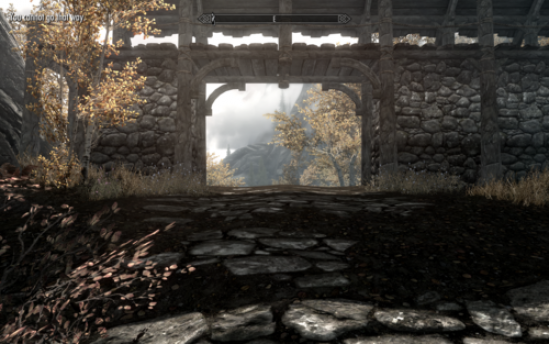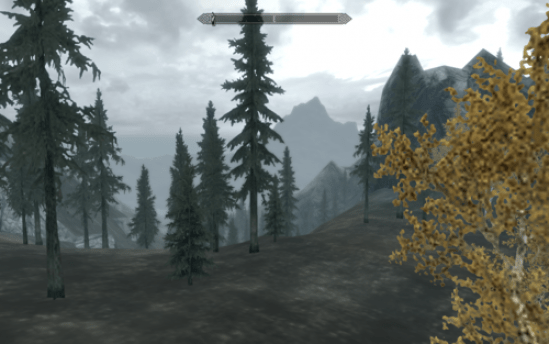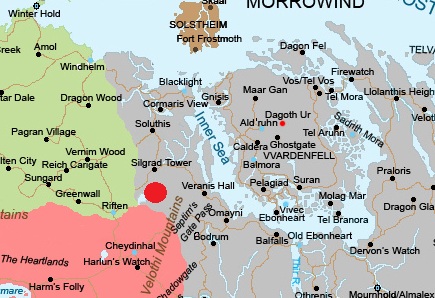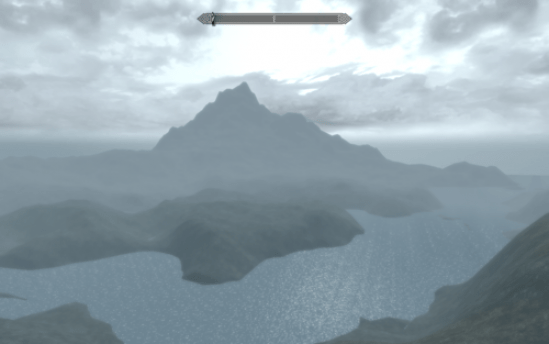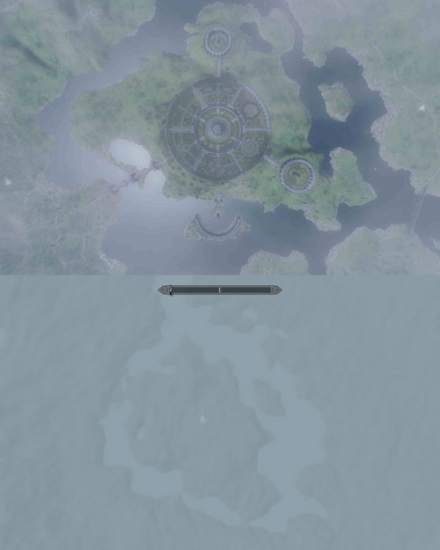Explorer Travels to Morrowind, Oblivion in Skyrim
While exploring the map, an intrepid Skyrim explorer came across the above archway in the bottom southeast of Skyrim. As with most games that have an edge of the map, this archway prevented access through the gate with the use of an old gaming stalwart, the invisible wall. The archway was in the direction of Morrowind, the third installment in the Elder Scrolls series, complete with visible terrain and foliage. So, the explorer did what any good gamer would do, and turned on no-clip mode and broke out of Skyrim, finding not only the landmass on which Morrowind takes place, but the Imperial City from Oblivion as well. There are two theories as to why this is in Skyrim.
The explorer notes that he was able to walk through Morrowind for quite a while before the textures and foliage gradually faded to something less intricate.
He estimated his location using the in-game Skyrim map, indeed putting him in Morrowind.
He came upon Vvardenfell, the volcano that destroyed Morrowind.
As well as the Imperial City of Cyrodiil, from Oblivion.
He notes that the previous games’ landmasses are slightly different in Skyrim, but as one can see from the above comparison, are pretty similar.
The popular, exciting theory regarding why Bethesda would put landmasses from both Morrowind and Oblivion into Skyrim is to set the stage for some future DLC, wherein we’d be given access to both lands. A slightly more sensible theory is that since each Elder Scrolls game takes place on the same world, and each game’s map shows the other, inaccessible lands, Skyrim’s 3D map required the previous games’ landmasses in order to properly fill out the map.
Either way, both theories result in no-clip mode allowing players to walk out of Skyrim and into the past.
- This simple mod gives the Skyrim map Google Earth style zoom capabilities‘
- Along with Skyrim came Bethesda’s enormous ambitions
- Skyrim trailer goes retro, parodies all the franchises you love
Have a tip we should know? [email protected]
